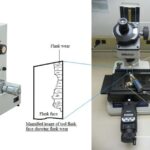Zoology 33 Views 1 Answers
Sourav PanLv 9October 2, 2024
What are the possible advantages and disadvantages of a chitinous exoskeleton in arthropods?
What are the possible advantages and disadvantages of a chitinous exoskeleton in arthropods?
Please login to save the post
Please login to submit an answer.
Sourav PanLv 9May 15, 2025
Arthropods, such as insects, spiders, and crustaceans, have a chitinous exoskeleton, which provides several advantages and disadvantages. Here’s a breakdown:
Advantages:
- Protection and Support:
- Physical protection: The exoskeleton shields arthropods from physical damage, such as predators’ bites or environmental hazards.
- Water loss prevention: It helps in reducing water loss, especially in terrestrial environments, by providing a barrier to desiccation.
- Structural Integrity:
- Support for muscles: The exoskeleton acts as an anchor point for muscles, allowing arthropods to move with precision and strength relative to their size.
- Adaptability for specialized functions: The exoskeleton can be modified into different forms (e.g., wings in insects, pincers in crabs) that suit various environmental adaptations and behaviors.
- Defense Mechanisms:
- Chemical defense: In some species, the exoskeleton is used for chemical defense, like those of beetles that secrete toxic substances or those with aposematic (warning) coloration to signal toxicity.
- Camouflage: The exoskeleton can also provide camouflage, helping arthropods blend into their surroundings and avoid predators.
- Efficiency in Locomotion:
- Strength-to-weight ratio: Chitin is lightweight yet very strong, allowing arthropods to move efficiently and exert significant force relative to their body size.
- Flexibility through Molting:
- Growth potential: The process of molting allows arthropods to grow in size by shedding their old exoskeleton and forming a new, larger one. This gives them a continual way to adapt to their growing bodies.
Disadvantages:
- Limitations on Growth:
- Exoskeleton rigidity: The rigid nature of the chitinous exoskeleton limits the arthropod’s ability to grow continuously. The exoskeleton must be periodically molted, which is energy-intensive and leaves the arthropod vulnerable during the transition phase.
- Molting risk: After molting, the arthropod is soft and vulnerable to predation and environmental threats until its new exoskeleton hardens.
- Limited Size (Exoskeleton Limitation):
- Size constraints: The exoskeleton, while strong, becomes heavier and more burdensome as the animal grows. This is why very large arthropods (like giant crabs or spiders) are relatively rare. In larger animals, the structural limits of chitin may not support the weight efficiently.
- Increased metabolic demands: As an arthropod grows larger, the metabolic cost of maintaining and molting a heavier exoskeleton increases.
- Inflexibility in Extreme Environments:
- Limited flexibility: While chitin offers protection, it can restrict flexibility compared to more flexible skeletons like those found in vertebrates. This can limit certain forms of movement, such as rapid twisting or bending.
- Vulnerability During Molt:
- Vulnerability: When an arthropod molts, it temporarily loses its armor, making it more susceptible to predators and environmental dangers.
- Long recovery time: After molting, it takes time for the new exoskeleton to harden, leaving the arthropod in a weak and defenseless state.
- Energy Costs of Molting:
- Metabolic energy: The process of molting is costly in terms of energy, as the arthropod must undergo several physiological changes to shed the old shell and grow a new one.
- Time of immobility: Arthropods are temporarily immobile during the molt, unable to hunt or escape from predators during this vulnerable period.
0
0 likes
- Share on Facebook
- Share on Twitter
- Share on LinkedIn
0 found this helpful out of 0 votes
Helpful: 0%
Helpful: 0%
Was this page helpful?




